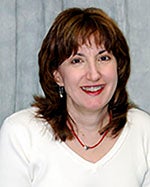SCAD - Not Your Typical Heart Attack
March 4, 2024
The pain took my breath away – it came on suddenly, making my chest feel like it was being squeezed into a vice. Then came the uncomfortable, tingling feeling in my left arm and jaw. Even with my mind racing in fear, I knew what was happening to me. I was suffering a SCAD heart attack – my third in the last 20 years.
A Spontaneous Coronary Artery Dissection, or “SCAD,” is a spontaneous separation of the coronary arterial wall that can result in a heart attack. It can happen when a tear can occur between the layers of the arterial wall, creating a flap or by bleeding inside the arterial wall causing blood to become trapped and bulge inward. The flap or bulge can narrow or even block the artery, preventing blood flow from reaching the heart muscle and causing a life-threatening heart attack.
What are the risk factors for SCAD? Although a typical SCAD patient is a woman in her 40’s to 50’s, this type of heart attack can occur at any age and can occur in men. Individuals who suffer a SCAD often don’t have typical risk factors for heart disease, such as high blood pressure, high cholesterol, or diabetes. Extreme physical exertion or prolonged emotional stress may also be contributing factors to a SCAD occurrence. And while the condition accounts for only up to 4 percent of all heart attacks, SCAD is an important cause of heart attack in young women, responsible for up to 25 percent of all heart attack cases in women younger than 50 years of age. It’s also the leading cause of pregnancy-associated heart attacks.
While the symptoms are similar, SCAD differs from a typical heart attack in several ways, such as diagnosis, treatment, and recovery. SCAD symptoms may include chest pain or pressure, a rapid heartbeat, pain in the arms, jaw or neck, excessive sweating, nausea, or syncope.
Diagnosis can be tricky as evidence of a SCAD may not show up on an electrocardiogram (EKG), which checks for different heart conditions by recording the heart’s electrical signal, in up to 50 percent of patients. That was the case in my situation – while my EKG came back within the normal range, I was clearly in distress. Initial clinical indication of my SCAD came later with the results of a series of blood tests to determine my heart enzyme level (cardiac troponin). High levels of troponin indicate that the heart muscle has been damaged and the patient has likely suffered a heart attack. Confirmation of SCAD can come during an angiogram where the cardiologist guides a catheter to the heart to see inside the heart arteries. During my angiogram, the cardiologist could see that my current SCAD had already begun to heal. (My first SCAD, in 2003, had healed so completely that the cardiologist saw no evidence of it. My second SCAD, in 2018, has also completely healed on its own.)
Because a SCAD is a tear in the coronary artery wall that may heal on its own, procedural intervention (as would be the case for a blockage) may not be necessary. In stable patients without ongoing pain, conservative treatment option is preferred approach with medications to relieve lingering chest pain and reduce the possibility of recurrence. Going forward, SCAD patients may also be given restrictions on heavy lifting, high intensity and inversion exercises, and roller coaster-type amusement rides.
While providers still have a great deal to learn about SCAD, it should be noted that a full recovery is possible if SCAD is diagnosed quickly and the patient receives appropriate treatment. I’m living proof that there is life after SCAD. I’m grateful that my cardiologist recommended cardiac rehab where a program, tailored to my individual needs, not only helped me safely resume a regular exercise program, but perhaps more importantly, gave me the confidence to trust my body again. And while I’ve been able to return to work full time, I am adamant about keeping unnecessary stress at bay and making time to spend with my grandchildren – and that is really the greatest gift of all.

Written by Mary Orr, Media and Communications Specialist for Trinity Health Of New England

It is important to establish care with a cardiologist for early diagnosis, close monitoring of symptoms as well as risk factor modification. With a commitment to high-quality care, Trinity Health Of New England’s Hoffman Heart Institute offers patients access to an entire network of hospitals, specialists and outpatient clinics that address the full spectrum of cardiovascular conditions.
Learn More